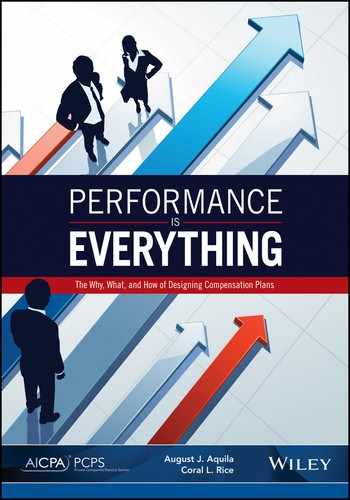Book Description
Compensation is the largest expense that a firm incurs. And yet, few firms really manage it well. The trick is realizing it is more complex than just splitting the pie.
The crucial issues of compensation and performance are inextricably linked. In this important resource, experts August Aquila and Coral Rice offer a unique perspective on how you can align your compensation and performance management plans in order to boost performance, maximize profits, and keep both your staff and clients happy.
This companion to Aquila and Rice’s successful AICPA publication, Compensation as a Strategic Asset, will pick up where that guide left off, offering readers the “Why, What, and How” for compensation plans filtered through the lens of performance management.
The authors convey, in the simplest and clearest terms, how firms can improve overall firm performance by engaging in the following activities:
- Develop a compelling vision
- Develop a strategy for what you want to accomplish
- Have the right systems in place to help achieve the strategy
- Align individual goals with firm and departmental goals
- Create an effective performance review system
- Monitor performance monthly and quarterly for trends
- Provide higher performers with more rewards than average performers
Ultimately, this guide is based on what other firms are doing, and let's you know why it’s working or why it’s not. By guiding you through a process and providing you with the tools to design a partner and staff compensation plan, Performance Is Everything will help you develop the plan that works for your firm.
